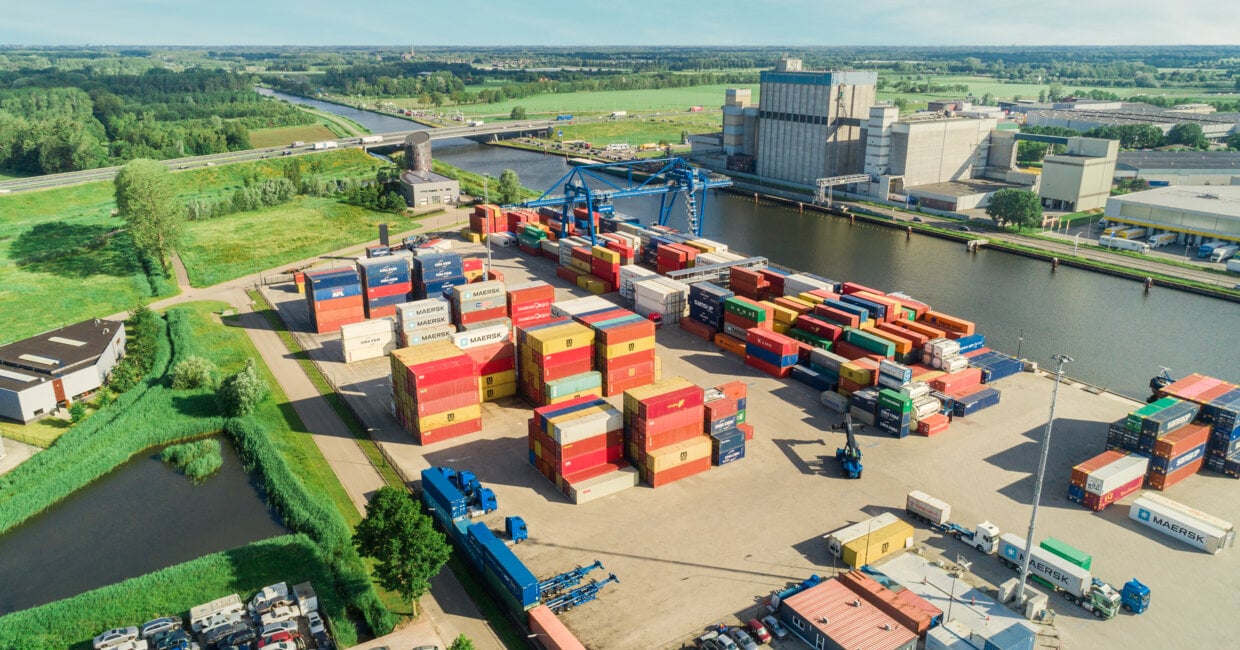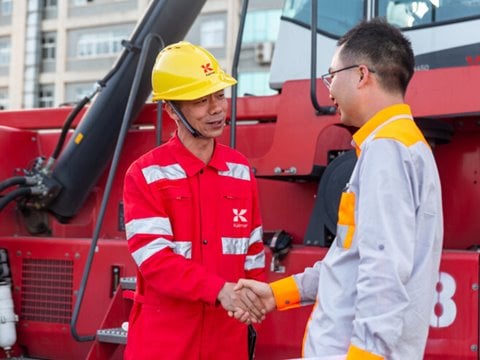
Towards eco-efficient cargo handling operations, part 1: Setting your eco-efficient vision and targets
In this five-part article series, we examine Kalmar's recommended step-by-step approach to eco-efficient cargo handling operations. Careful planning and a systematic, data-driven approach are crucially important, all the way from the first vision of the desired future state, to solving questions of infrastructure and equipment, and on to the final stages of implementation and optimisation.
Companies face increasing pressure for sustainable operations from the public, society as their own employees. As a result, companies are setting their overall sustainability goals and targets for reducing CO2 emissions.
In November 2020, the European Sea Ports Organization (ESPO) published its latest annual Environmental Report, which includes an analysis of environmental priorities and actions of European ports. Eco-efficiency has become an important focus area within the industry, with 96% of European ports reporting that they have an environmental policy in place. Moreover, 81% of ports state that they have a policy of encouraging the improvement and monitoring of environmental performance of contractors, tenants, operators and service providers.
Committed to change
Legislation and regulation are important drivers of eco-efficiency, as international and national government organisations set regulations and targets across domains and industries. For example, the Paris Climate Agreement and the European Green Deal are driving Europe towards a carbon-neutral future by 2050, while the California Air Resources Board (CARB) in the US is working towards cargo handling equipment regulations that will enable a transition to zero-emissions solutions.
"Eco-efficiency is no longer only a 'nice-to-have feature', but something that stakeholders throughout the value chain demand in order to reach their own sustainability goals and for the sake of pressure from end customers."
"Eco-efficiency is no longer only a 'nice-to-have feature', but something that stakeholders throughout the value chain demand in order to reach their own sustainability goals and for the sake of pressure from end customers," says Lasse Eriksson, Vice President, Technology at Kalmar. "This is really on everyone’s agenda and a common challenge, so there is genuine interest from all stakeholders to create solutions that support sustainability targets."
Kalmar and its parent company Cargotec are also committed to the United Nations Global Compact Business Ambition for 1.5°C to pursue science-based measures to limit global temperature rise to 1.5°C. This commitment means that Cargotec will make its own operations carbon neutral with net zero emissions by 2030, while simultaneously reducing Scope 3 (value chain) emissions by at least 50% from 2019 levels by 2030. As a result, Cargotec is aiming to reduce 1M tonnes of annual CO2 emissions already by 2024. Kalmar will play a key role in achieving this target.
Taking the first step
Driven by regulatory and stakeholder pressures, companies need to create a concrete strategy for transitioning into eco-efficient operations. Kalmar has broken down the process into a five-step model. First, it is essential to define a clear eco-efficiency vision with measurable targets. Next, an infrastructure and charging strategy must be created, while evaluating the range of available eco-efficient equipment. Finally, the eco-efficiency roadmap must be translated into a compelling business case that allows for flexible implementation and continuous optimisation.
Lasse Eriksson points out that it is important to have a shared understanding among key stakeholders of what you are aiming at, and how you are planning to get there from the current state. "You need to understand the current and future drivers and requirements regarding emissions, and what is motivating the eco-efficiency journey for you. How will the eco-efficiency drivers translate into concrete targets, and how do you formulate your vision based on that?"
A typical way to describe a goal state for eco-efficiency is a targeted reduction of CO2 emissions, along with a timeline for getting there. Once the target state is determined, it is necessary to identify the baseline by evaluating emission levels in current operations.
"Once the target state is defined, you need to estimate the gap between your current baseline state and the future scenario," says Lasse Eriksson. "The baseline for the gap analysis should be based on facts about today’s operations. The key question is how much the current operations produce emissions, which can be determined by analysing the fleet, its operational profile and duty cycles. Ideally, this calculation should be based on real-time data gathered from the equipment with solutions such as Kalmar Insight, so that it characterises the operations in a reliable way."
"The journey towards eco-efficiency always starts with a clear goal, but you need to remember that these processes take time. The key is to break it down into smaller steps and sub-targets."
When defining the target state for the future, it is also important to understand how operations will grow in the coming years. If major changes are expected, they should already be understood at this phase in order to set the target levels correctly. This will also guide the selection of the infrastructure and equipment types that will be used later on during the transformation.
"The journey towards eco-efficiency always starts with a clear goal, but you need to remember that these processes take time," says Lasse Eriksson. "The key is to break it down into smaller steps and sub-targets. Electrification is gaining ground rapidly at ports and terminals, but at the moment many operators are still uncertain about which specific technologies they should commit to. So you need to have a solid business case that ensures a return on your investment in the years to come, without relying on, for example, a one-off government funding initiative."
The time is now
Despite the significant challenges posed by an eco-efficient business and infrastructure transition, the first steps can be relatively easy to take. "Ports and terminals actually have the advantage that they can directly estimate and control the emissions from their on-site equipment," says Martin Hall, Country Director Kalmar Sweden. "This is much easier than driving change into external logistics and transport chains, so many operators in our industry will be able to get positive results very quickly. This means that if you have emissions targets set for 2030 or even 2025, it's definitely possible to reach them."
Hall also notes the potential advantage for first movers in eco-efficiency. "We are clearly in the middle of a massive change. Customers are embracing eco-efficiency not only for its intrinsic value for sustainability, but also because it is becoming clear that the companies that fall behind will not be as attractive for investors, which will have a clear impact on the value of the company. So for terminal operators and system providers alike, it actually makes financial sense to act now and be among the leaders in the field."
In the following part of the series, we look at the next step on the eco-efficiency journey – creating an overall strategy for eco-efficient port and terminal infrastructure.
Related articles
Further reading
Subscribe and receive updates in your email
Subscribe










